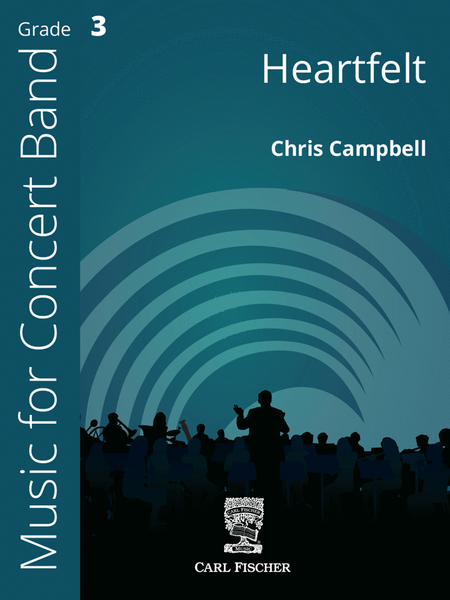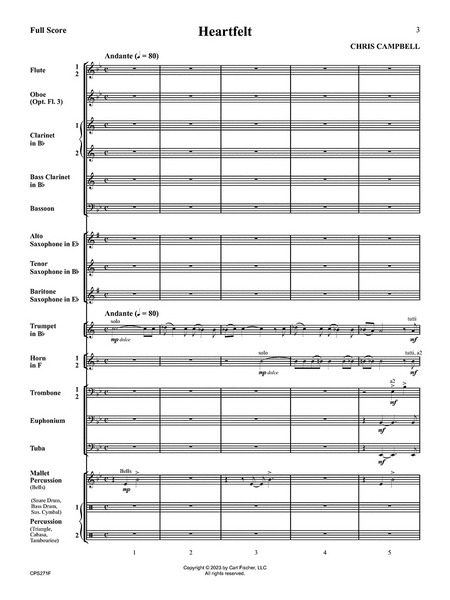Details
Description
SKU: CF.CPS271
Composed by Chris Campbell. Set of Score and Parts. 4+4+2+4+4+2+2+5+2+2+8+2+2+3+3+3+2+3+1+3+3+16 pages. Carl Fischer Music #CPS271. Published by Carl Fischer Music (CF.CPS271).ISBN 9781491163702. UPC: 680160922499.
Music is what feelings sound like is perhaps my favorite maxim about music. And I occasionally like to take a title—often a single word—and attempt to portray the purest expression of the feelings evoked by that word that I can.Heartfelt is probably my most successful attempt in this area. The quintuplet rhythms in this piece lend themselves surprisingly well to the emotional intent. Following the lead set by the trumpet soloist in the timing of these rhythms; the flutes and clarinets soon echo the sentiment. By the end of the piece, the entire wind ensemble has the opportunity to lock in the rhythm together (in rehearsals, m. 50 might be a good place to start this process).My recommendation is to just try to feel it, as opposed to attempting to "rush" four eighth notes or "drag" six sextuplet notes. And if there are some tears on some faces in the audience by the end of the piece, the ensemble has definitely done its job!Chris Campbell.
"Music is what feelings sound like" is perhaps my favorite maxim about music. And I occasionally like to take a title—often a single word—and attempt to portray the purest expression of the feelings evoked by that word that I can.Heartfelt is probably my most successful attempt in this area. The quintuplet rhythms in this piece lend themselves surprisingly well to the emotional intent. Following the lead set by the trumpet soloist in the timing of these rhythms; the flutes and clarinets soon echo the sentiment. By the end of the piece, the entire wind ensemble has the opportunity to lock in the rhythm together (in rehearsals, m. 50 might be a good place to start this process).My recommendation is to just try to feel it, as opposed to attempting to "rush" four eighth notes or "drag" six sextuplet notes. And if there are some tears on some faces in the audience by the end of the piece, the ensemble has definitely done its job!Chris Campbell.


 Share
Share